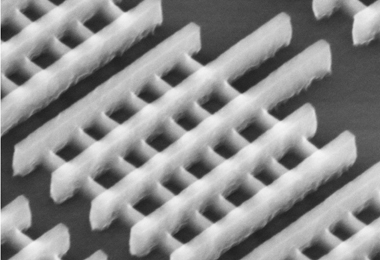
Intel has announced a major technical breakthrough in microprocessors with a 22 nanometer chip using 3-D transistors.
Intel’s 3-D transistor design (called Tri-Gate) is now ready for high volume production and will be introduced at the 22-nanometer (nm) node (referring to the size of individual transistor features) in a chip codenamed "Ivy Bridge." More than 6 million 22nm Tri-Gate transistors could fit in the period at the end of this sentence.
"Intel's scientists and engineers have once again reinvented the transistor, this time utilizing the third dimension," said Intel President and CEO Paul Otellini. "Amazing, world-shaping devices will be created from this capability as we advance Moore's Law into new realms."
Moore's Law, a business model for the semiconductor industry coined by Intel co-founder Gordon Moore over 40 years ago, states that transistor density will double every two years. The Ivy Bridge design allows approximately twice as many transistors to fit into the same space as found on the current generation of 32nm chips.
Intel's 3-D Tri-Gate transistors enable chips to operate at lower voltage with lower leakage, providing improved performance and energy efficiency compared to previous state-of-the-art transistors. The capabilities give chip designers the flexibility to choose transistors targeted for low power or high performance, depending on the application.
"The performance gains and power savings of Intel's unique 3-D Tri-Gate transistors are like nothing we've seen before," said Mark Bohr, Intel Senior Fellow. "This milestone is going further than simply keeping up with Moore's Law. The low-voltage and low-power benefits far exceed what we typically see from one process generation to the next. It will give product designers the flexibility to make current devices smarter and wholly new ones possible. We believe this breakthrough will extend Intel's lead even further over the rest of the semiconductor industry."
Intel research scientists invented the Tri-Gate transistor in 2002, named for the three sides of the gate. This announcement follows years of development and marks the implementation of this work for high-volume manufacturing.
The traditional "flat" two-dimensional planar gate is replaced with an incredibly thin three-dimensional silicon fin that rises up vertically from the silicon substrate. Control of current is accomplished by implementing a gate on each of the three sides of the fin – two on each side and one across the top – rather than just one on top, as is the case with the 2-D planar transistor.
The Ivy Bridge microprocessor is slated for high-volume production by the end of this year.













